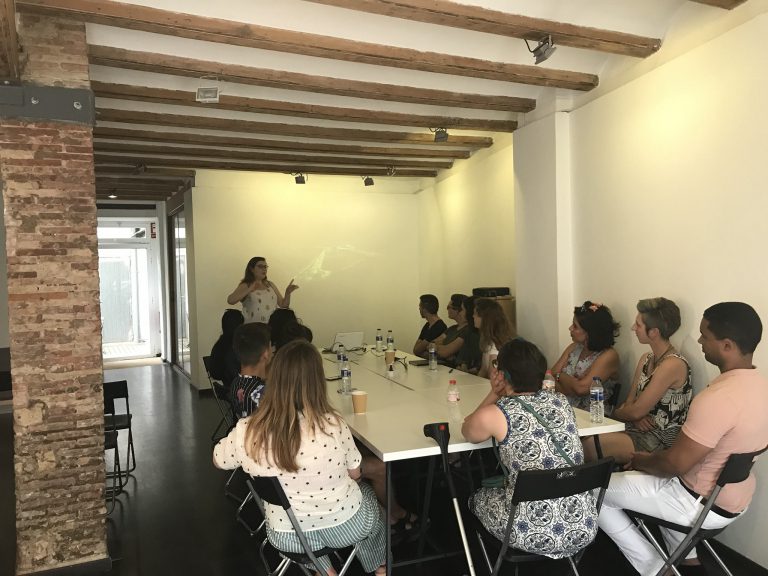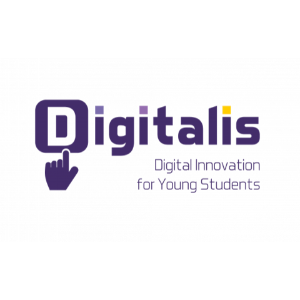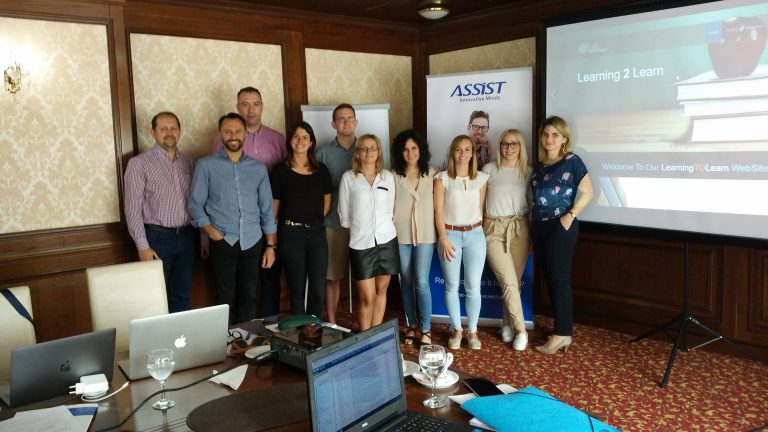Personalized learning of English as foreign language in group environments – PLGE project
We live in a world where globalisation plays a key role from several years ago and in which people being connected to other from all around the world is not just a want anymore, but a necessity. This is one of the main reasons why the learning of English as a foreign language has gained so many importance and countries that do not have English as their mother language have pulled their socks up at learning it in order to improve communication with the rest of the world and therefore being more integrated in the society. However, the way in which teaching and learning English is seen is changing and a new approach is being considered among professionals: the Personalised Learning in Group Environments.

It is proved that traditional teaching, which treats all students equally, does not work in many cases. Currently, many educational institutions use digital technology to offer “personalised education”: a model that helps students develop a broad set of skills within their personal interests. Personalized learning is an educational approach whose purpose is adjusting learning to the strengths, needs, abilities and interests of each student. Imagine a classroom whose educational approach is not «the same for everyone». The teacher does not teach the same lessons to all students, but guides everyone in their own learning process in which each student receives a learning plan based on what they know and how the student learns best so they can learn skills at different paces. However, their learning is aligned with the standards corresponding to their grade level that set high expectations for all students.

Some advantagesthat personalized English learning shows are:
- They allow a better monitoring of each student, which helps to measure their progress.
- It makes easy to detect if a learning method is not working well in any student and change it for another that fits them better.
- It allows to adjust learning to each student’s interests and needs. For example, a person working in the business world will need to acquire a different vocabulary for their day a day than another person working in the hospitality industry. These specialization needs can be addressed through personalized learning.
- It helps teachers to choose the learning resources that will result more effective to each student, avoiding wasting time in activities that bring no value to the student.
- When focus on their interests, students are happier and more motivated to keep learning.
- Students learn at the speed that better suits them, so learning English may be turned into an easy routine.
- A personalized study plan encourages learners to set goals.
Some people might associate personalized learning with individual learning, private lessons, etc., but it is important that this personalized learning is carried out in group environments, since listening and speaking activities require interaction with other people, which is fundamental to develop good English skills and stimulate social inclusion, that is usually the main reason why non-English speakers get to learn the language.
The key role of new technologies in a Personalized English Learning System
The existing learning system simply presents a large number of learning resources to learners, without considering the needs of students’ personalized learning, resulting in the problem of resource selection. In view of the above problems and the shortcomings of English learning system, the personalized English learning system defenders have based on technological tools that make easier the implementation of this new method.
As an example, we can see the case of the schools network “AltSchool”. At AltSchool, there are no textbooks and no whole-class lessons that teach one subject to every pupil in the same way. Instead children use digital tablets to support their real-world and immersive lessons, and document their learning via online personalized learning “playlists” they have co-developed with teachers and parents. Meanwhile, teachers use wallmounted cameras to capture students’ important learning moments and further their own professional development.
Launched in 2013 by former Google executive Max Ventilla, AltSchool is an expanding network of private “microschools” for primary and middle school students in the United States. AltSchool emphasizes student-driven, project-based learning and entrepreneurship.

It’s just one of a growing number of educational institutions worldwide that have adopted online platforms that empower students to pursue their own learning goals. Adaptive online programs on the student’s digital tablets,e-books and even gamification and storytellingare some of the tools that educational institutions approaching this new methodology use for providing personalized learning to its students.
Personalized learning defenders anticipate that the trend of students directing their own education will continue to grow. Fact for which it is expected that this practice gets to be more and more applied in the field of English learning, changing the perception that non-native speakers have towards learning the language. This innovative personalized method will allow people to combine their personal interests and needs with English learning in a way that keeps them motivated and receptive while they learn the foreign language.
References:
https://elearningindustry.com/facets-of-personalized-learning-english-skills-synergy-6
https://compassmag.3ds.com/en/?/switchlanguage/to/en/2#/en/Education/PERSONALIZED-EDUCATION
https://online-journals.org/index.php/i-jet/article/view/8789








